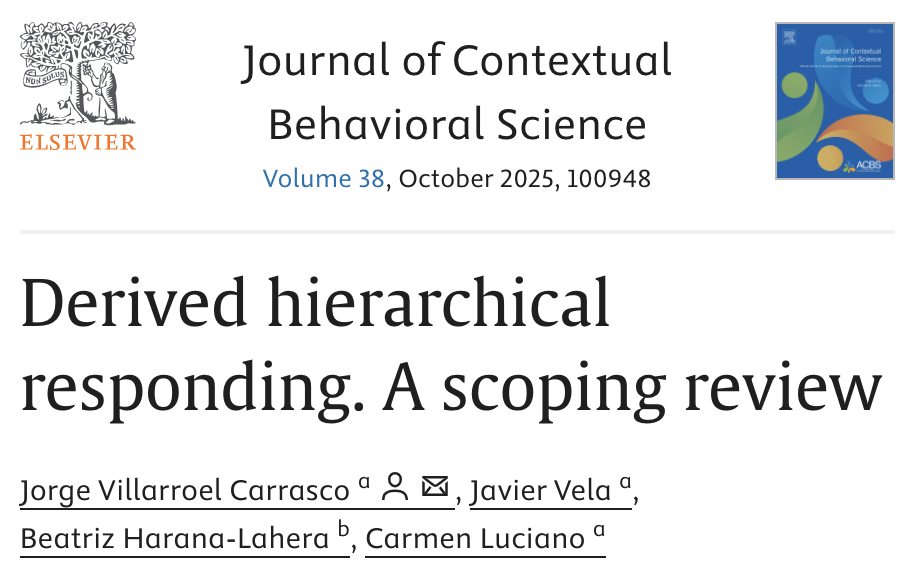Journal of Contextual Behavioral Science (JCBS)
Volume 38, October 2025
Authors
Jorge Villarroel Carrasco, Javier Vela, Beatriz Harana-Lahera, & Carmen Luciano
Key Findings
- This review analyzed 16 studies that trained hierarchical relational networks.
- Seven trained non-arbitrary networks; nine trained arbitrary ones.
- Methods and network complexity varied considerably across studies.
- More precise isolation of training conditions is needed for arbitrary hierarchies.
Abstract
Hierarchical networks are defined as classes of stimuli (e.g., “living organism”) that include subclasses (e.g., “plants,” “animals”), which in turn contain further sublevels (e.g., “cats,” “dogs,” “trees,” “grass”). This type of responding is relevant in domains such as concept learning, language development, psychopathology, and education, among others. It has been studied from various theoretical perspectives, including behavioral approaches. In this context, Relational Frame Theory (RFT) has facilitated the experimental analysis of such responses by conceptualizing them as derived relational responding. This scoping review analyzes 16 experimental studies that trained hierarchical networks and tested derived relational responses. The studies have been identified following PRISMA-ScR-guided scoping reviews. The review included studies that met these criteria: (1) experimental manipulation of at least one independent variable; (2) training categorization across two or more hierarchical levels; (3) testing derived or untrained responses; and (4) publication in peer-reviewed journals. The review examines training methods, network complexity, and derived responses within the networks. Of the total of studies identified, seven studies trained non-arbitrary classification responses, while nine focused on arbitrary networks. Among these, there was variability in training variables, network structure (number of stimuli, branches, among others), and derived functions tested. Overall, the literature remains scarce and fragmented regarding complex hierarchical responding, especially the derived functions across levels and branches. Future research should clarify training conditions to establish hierarchical responding and further explore its defining features.
